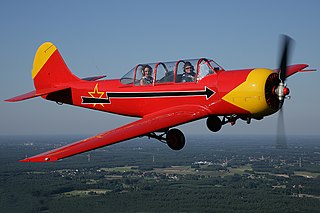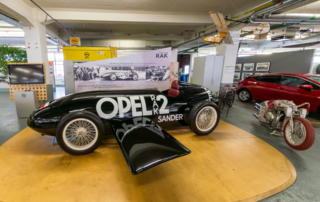Related Research Articles

An aircraft is a vehicle that is able to fly by gaining support from the air. It counters the force of gravity by using either static lift or the dynamic lift of an airfoil, or, in a few cases, the downward thrust from jet engines. Common examples of aircraft include airplanes, helicopters, airships, gliders, paramotors, and hot air balloons.

An intercontinental ballistic missile (ICBM) is a ballistic missile with a range greater than 5,500 kilometres (3,400 mi), primarily designed for nuclear weapons delivery. Conventional, chemical, and biological weapons can also be delivered with varying effectiveness, but have never been deployed on ICBMs. Most modern designs support multiple independently targetable reentry vehicle (MIRVs), allowing a single missile to carry several warheads, each of which can strike a different target. Russia, the United States, China, France, India, the United Kingdom, Israel, and North Korea are the only countries known to have operational ICBMs.

A rocket is a vehicle that uses jet propulsion to accelerate without using the surrounding air. A rocket engine produces thrust by reaction to exhaust expelled at high speed. Rocket engines work entirely from propellant carried within the vehicle; therefore a rocket can fly in the vacuum of space. Rockets work more efficiently in a vacuum and incur a loss of thrust due to the opposing pressure of the atmosphere.

A ramjet, or athodyd, is a form of airbreathing jet engine that uses the forward motion of the engine to produce thrust. Since it produces no thrust when stationary ramjet-powered vehicles require an assisted take-off like a rocket assist to accelerate it to a speed where it begins to produce thrust. Ramjets work most efficiently at supersonic speeds around Mach 3 and can operate up to speeds of Mach 6.

Robert Hutchings Goddard was an American engineer, professor, physicist, and inventor who is credited with creating and building the world's first liquid-fueled rocket. Goddard successfully launched his rocket on March 16, 1926, which ushered in an era of space flight and innovation. He and his team launched 34 rockets between 1926 and 1941, achieving altitudes as high as 2.6 km (1.6 mi) and speeds as fast as 885 km/h (550 mph).

The Mikoyan-Gurevich I-250, aka MiG-13, was a Soviet fighter aircraft developed as part of a crash program in 1944 to develop a high-performance fighter to counter German turbojet-powered aircraft such as the Messerschmitt Me 262. The Mikoyan-Gurevich design bureau decided to focus on a design that used something more mature than the jet engine, which was still at an experimental stage in the Soviet Union, and chose a mixed-power solution with the VRDK motorjet powered by the Klimov VK-107 V12 engine. While quite successful when it worked, with a maximum speed of 820 km/h (510 mph) being reached during trials, production problems with the VRDK fatally delayed the program and it was canceled in 1948 as obsolete.

The Heinkel He 176 was a German experimental rocket-powered aircraft. It was the world's first aircraft to be propelled solely by a liquid-fueled rocket, making its first powered flight on 20 June 1939 with Erich Warsitz at the controls. It was a private venture by the Heinkel company in accordance with director Ernst Heinkel's emphasis on developing technology for high-speed flight. The performance of the He 176 was not spectacular, but it did provide "proof of concept" for rocket propulsion.

The Opel RAK.1 was the world's first purpose-built rocket-powered aircraft. It was designed and built by Julius Hatry under commission from Fritz von Opel, who flew it on September 30, 1929 in front of a large crowd at Rebstock airport near Frankfurt am Main. The RAK.1 plane was part of a series of rocket-powered vehicles that were developed and demonstrated within the Opel RAK program, the world's first large-scale rocket program.

The Yakovlev Yak-52 is a Soviet primary trainer aircraft which first flew in 1976. It was produced in Romania from 1977 to 1998 by Aerostar, as Iak-52, which gained manufacturing rights under agreement within the former COMECON socialist trade organisation. The Yak-52 was designed as an aerobatic trainer for students in the Soviet DOSAAF training organisation, which trained civilian sport pilots and military pilots. Currently the Yak-52 is used in the Fédération Aéronautique Internationale (FAI) World Aerobatic Yak 52 Competition, a popular powered aircraft one-design World Aerobatic Championship.

The Soviet space program was the national space program of the former Union of Soviet Socialist Republics (USSR), active from 1955 until the dissolution of the Soviet Union in 1991.

A jet pack, rocket belt, or rocket pack is a device worn on the back which uses jets of gas or liquid to propel the wearer through the air. The concept has been present in science fiction for almost a century and became widespread in the 1960s. Real jet packs have been developed using a variety of mechanisms, but their uses are much more limited than their fictional counterparts because of the simple parts of the Earth's atmosphere, gravity, the low energy density of extream fuels, and the human body not being suited to flight, and they are principally used for stunts. A practical use for the jet pack has been in extra-vehicular activities for astronauts because of the weightlessness and lack of friction-creating atmosphere in orbit. The term jet suit is used for a system incorporating a jet pack and associated jets attached to the arms to increase manoeuvrability.

The VA-111 Shkval torpedo and its descendants are supercavitating torpedoes originally developed by the Soviet Union. They are capable of speeds in excess of 200 knots.
The Yakovlev Yak-4 was a Soviet light bomber used during World War II. It was developed from the Ya-22/Yak-2.
The Rocket U-boat was a series of military projects undertaken by Nazi Germany during the Second World War. The projects, which were undertaken at Peenemünde Army Research Center, aimed to develop submarine-launched rockets, flying bombs and missiles. The German Navy did not use submarine-launched rockets or missiles from U-boats against targets at sea or ashore. These projects never reached combat readiness before the war ended.

The Bereznyak-Isayev BI-1 was a Soviet short-range rocket powered interceptor developed during the Second World War.

The Sukhoi Su-6 was a Soviet ground-attack aircraft developed during World War II. The mixed-power high-altitude interceptor Su-7 was based on the single-seat Su-6 prototype.

The Ilyushin Il-20 was a Soviet prototype for a heavily armored ground-attack aircraft to replace the Ilyushin Il-10. It featured a number of innovative concepts including a cockpit mounted on top of the engine, directly behind the propeller, and wing-mounted autocannon that could be adjusted on the ground to fire level or depressed 23° to allow the aircraft to strafe ground targets while remaining in level flight. However it was slower than the Il-10, and its M-47 engine was problematic in flight tests in 1948–49. It was not placed into production. The test pilots called the aircraft the Gorbach (Hunchback).

The first rockets were used as propulsion systems for arrows, and may have appeared as early as the 10th century in Song dynasty China. However more solid documentary evidence does not appear until the 13th century. The technology probably spread across Eurasia in the wake of the Mongol invasions of the mid-13th century. Usage of rockets as weapons before modern rocketry is attested to in China, Korea, India, and Europe. One of the first recorded rocket launchers is the "wasp nest" fire arrow launcher produced by the Ming dynasty in 1380. In Europe rockets were also used in the same year at the Battle of Chioggia. The Joseon kingdom of Korea used a type of mobile multiple rocket launcher known as the "Munjong Hwacha" by 1451.

Opel-RAK were a series of rocket vehicles produced by German automobile manufacturer Fritz von Opel, of the Opel car company, in association with others, including Max Valier, Julius Hatry, and Friedrich Wilhelm Sander. Opel RAK is generally considered the world's first large-scale rocket program, significantly advancing rocket and aviation technology as well as instrumental in popularizing rockets as means of propulsion. In addition Opel RAK demonstrations were also highly successful as publicity stunts for the Opel car company. The Lippisch Ente, the world's first rocket-powered glider and piloted for its first flight on June 11, 1928, by Fritz Stamer at Wasserkuppe, was bought and operated by Opel in context of the Opel RAK program but is not formally designated an Opel RAK series number. Also a rocket-powered RAK-Motoclub motorbike, based on a conventional Opel Motoclub 500 SS and presented at the Berlin Motorshow 1928, did not receive a formal RAK number.
References
- New York Times (requires registration)
- Herald Tribune (copy of New York Times article)
- Dispatch Online